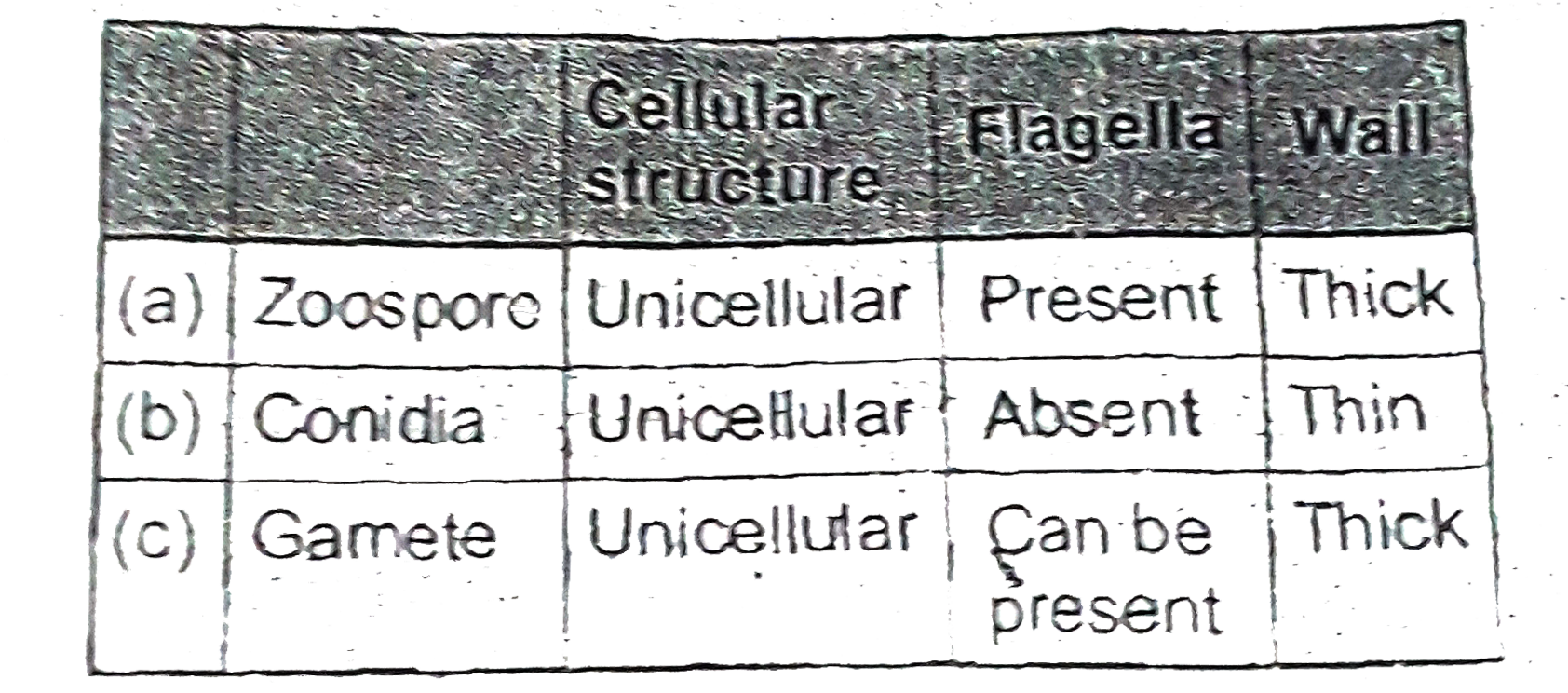Mark the correct option w.r.t. analogous structures.
Phylloclade, phyllode
Phyllode, thorn
Phylloclade, cladode
Spine, phylloclade
To solve the question regarding analogous structures, we need to analyze the options provided and understand the concept of analogous structures in biology.
1. Understand Analogous Structures:
- Analogous structures are those that have different embryonic origins but perform similar functions. They arise from different ancestors but evolve to serve similar purposes, which is known as convergent evolution.
2. Review the Options:
- The options given are:
a) Phylloclad and Phyllote
b) Phyllote and Thorn
c) Phylloclad and Cladode
d) Spine and Phylloclad
3. Analyze Each Option:
- Option a: Phylloclad and Phyllote:
- Phylloclad is a modified leaf or petiole, while Phyllote is a leaf-like stalk. They have different structures and origins, but they do not perform the same function. Hence, this is incorrect.
- Option b: Phyllote and Thorn:
- Phyllote (leaf-like stalk) and Thorn (modified stem) are considered homologous structures because they share a common origin. Thus, this option is incorrect.
- Option c: Phylloclad and Cladode:
- Phylloclad (modified leaf or petiole) and Cladode (modified green stem) are different in origin but perform the same function of photosynthesis. Therefore, this option is correct as they are analogous structures.
- Option d: Spine and Phylloclad:
- Spines (modified leaves) and Phylloclad (modified leaf or petiole) do not share the same function and are not analogous. This option is incorrect.
4. Conclusion:
- The correct option regarding analogous structures is c) Phylloclad and Cladode.
- Analogous structures are those that have different embryonic origins but perform similar functions. They arise from different ancestors but evolve to serve similar purposes, which is known as convergent evolution.
- The options given are:
a) Phylloclad and Phyllote
b) Phyllote and Thorn
c) Phylloclad and Cladode
d) Spine and Phylloclad
- Option a: Phylloclad and Phyllote:
- Phylloclad is a modified leaf or petiole, while Phyllote is a leaf-like stalk. They have different structures and origins, but they do not perform the same function. Hence, this is incorrect.
- Option b: Phyllote and Thorn:
- Phyllote (leaf-like stalk) and Thorn (modified stem) are considered homologous structures because they share a common origin. Thus, this option is incorrect.
- Option c: Phylloclad and Cladode:
- Phylloclad (modified leaf or petiole) and Cladode (modified green stem) are different in origin but perform the same function of photosynthesis. Therefore, this option is correct as they are analogous structures.
- Option d: Spine and Phylloclad:
- Spines (modified leaves) and Phylloclad (modified leaf or petiole) do not share the same function and are not analogous. This option is incorrect.
- The correct option regarding analogous structures is c) Phylloclad and Cladode.
Topper's Solved these Questions
Similar Questions
Mark the correct option w.r.t. informosomes.
View SolutionMark the correct option (w.r.t monosomy)
View SolutionMark the correct option w.r.t. hydroponics
View SolutionMark the correct option w.r.t hydroponics
View SolutionChoose correct option w.r.t. following structures

View SolutionMark the incorrect option w.r.t lac operon
View SolutionChoose correct option w.r.t. Lenticels
View SolutionChoose the correct option w.r.t TMV
View SolutionMark the correct option w.r.t. critical elements
View SolutionMark the correct statement w.r.t. snakes.
View Solution
